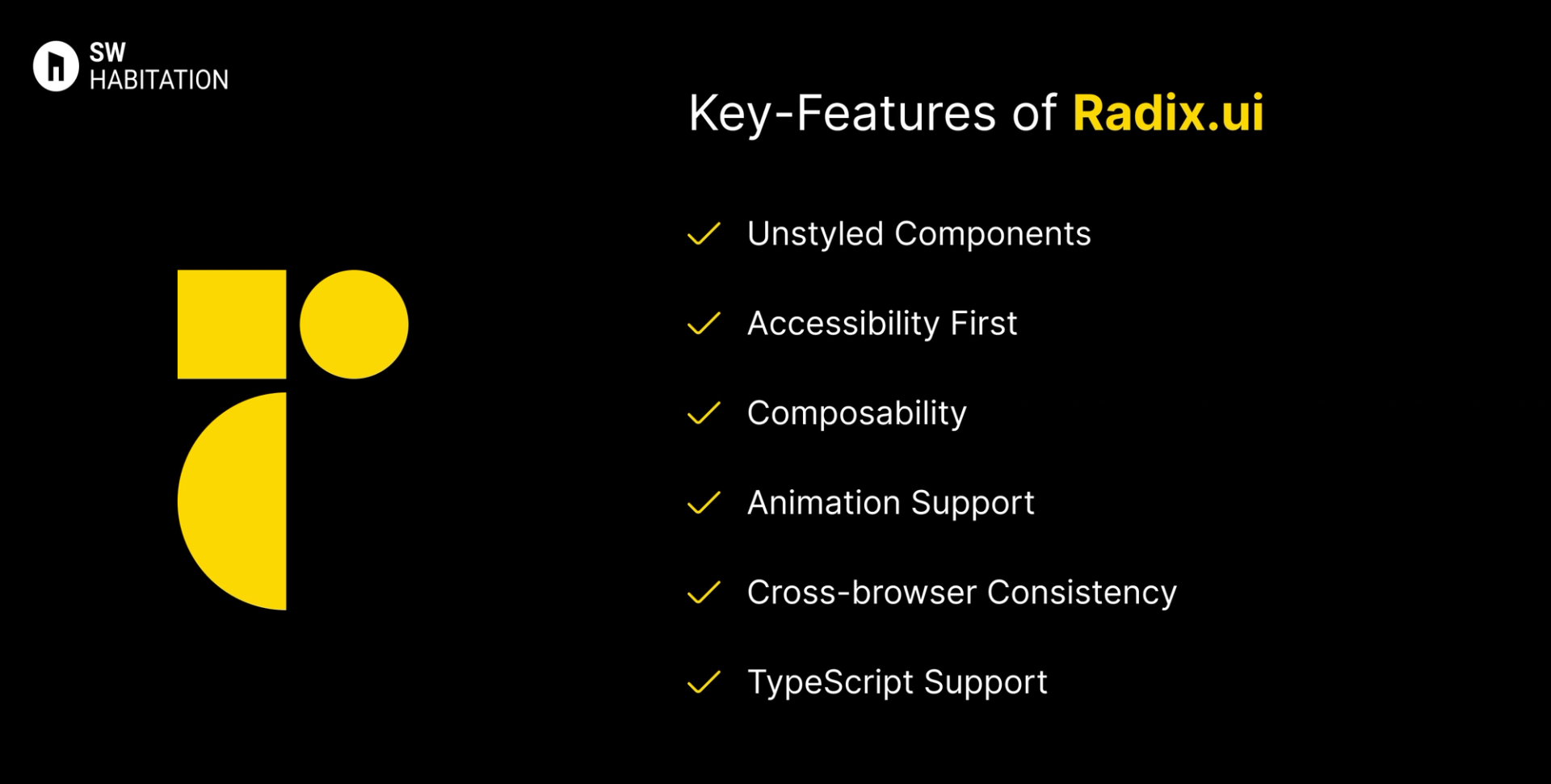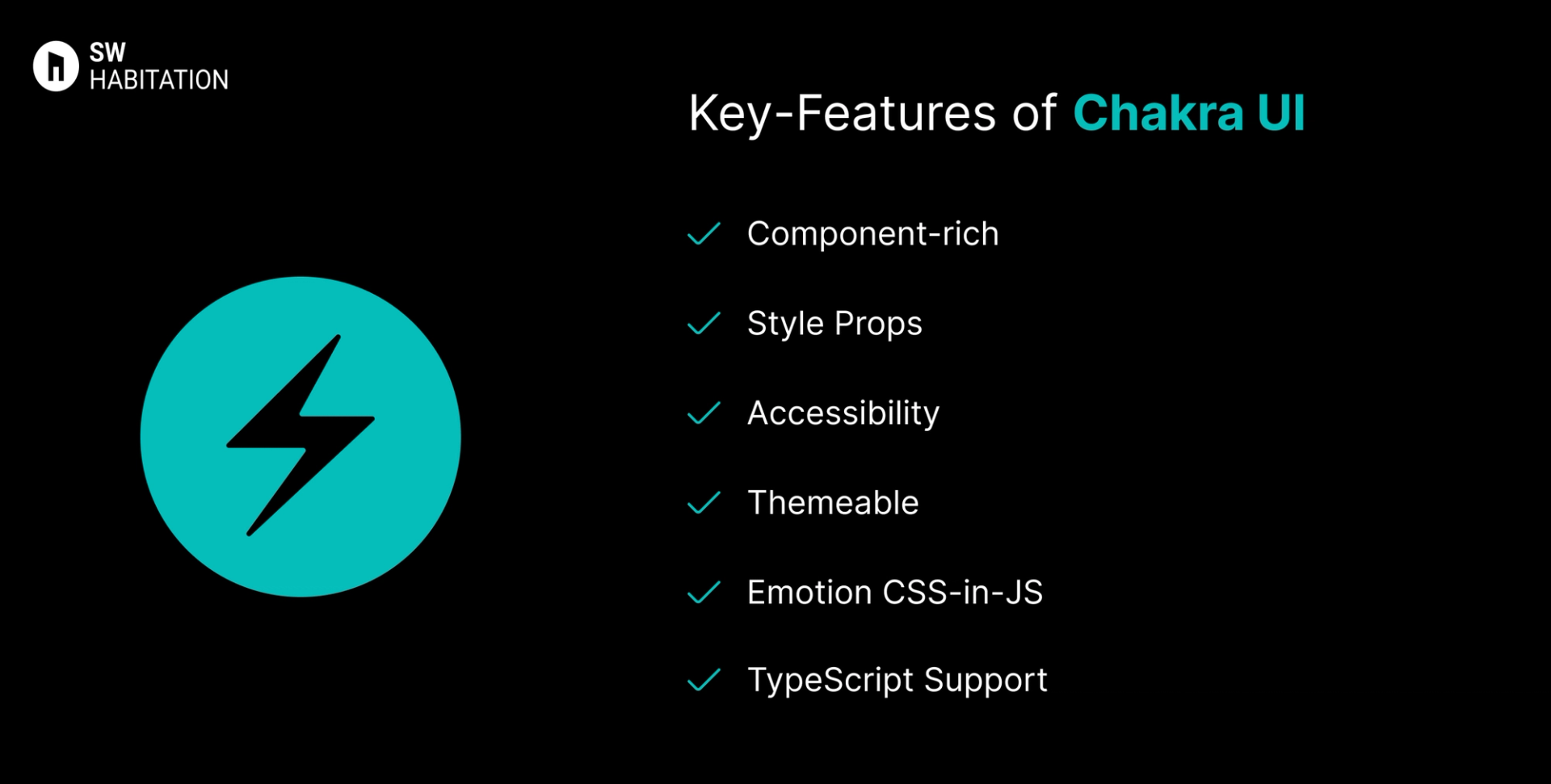Radix UI vs. Chakra UI

Radix UI

Chakra UI
You know how building a website can feel like a lot, especially when you’re trying to style every little thing yourself? Buttons, forms, layouts… it adds up fast. That’s where UI frameworks really save the day. They give you a bunch of premade design elements that you can just drop in and go. It’s like having a design starter pack that helps your site look clean and professional, without spending forever tweaking the details.
What is Radix UI?
Radix UI is a modern component library offering headless, unstyled, and accessible primitives for React. These primitives include tooltips, dialogs, dropdowns, switches, and more, giving you full control over their design and behavior.
It's built for developers who want to create custom design systems without reinventing the wheel.
Key Features of Radix UI


- Unstyled Components: You bring your own styles using any CSS method.
- Accessibility First: Meets WCAG standards and handles focus management, keyboard support, ARIA, etc.
- Composability: Designed to work well in any React component structure.
- Animation Support: Works well with animation libraries like Framer Motion.
- Cross-browser Consistency: Tested across all major browsers.
- TypeScript Support: Full typings for all components.
Advantages of Radix UI
- Total design freedom, you're not tied to any design system.
- Accessibility is handled for you out-of-the-box.
- Works with Tailwind, Emotion, Styled Components, or vanilla CSS.
- Ideal for teams building a component library or design system.
- Tree-shakable, import only what you need.
Disadvantages of Radix UI
- No styles included, you must build your own from scratch.
- Longer time to build complete UIs compared to styled libraries.
- Slightly higher learning curve for accessibility and composition.
- Not ideal for beginners who want fast results.
What is Chakra UI ?
Chakra UI is a popular React component library that lets you build accessible, responsive UIs with ease. It provides a collection of components with built-in ARIA attributes, theme support, and responsive design via style props.
It’s ideal for devs who want plug-and-play components with built-in styling and dark mode.
Key Features of Chakra UI


- Component-rich: Inputs, modals, alerts, menus, tooltips, accordions, etc.
- Style Props: Apply margin, padding, color, size directly via props.
- Accessibility: ARIA-compliant components out of the box.
- Themeable: Custom themes, variants, dark mode support.
- Emotion CSS-in-JS: Built with Emotion for dynamic styling.
- TypeScript Support: Fully typed and developer-friendly.
Advantages of Chakra UI
- Easy to use with minimal setup.
- Style props eliminate the need for external CSS.
- Great documentation and community support.
- Built-in dark mode and responsive utilities.
- Clean and maintainable code structure.
Disadvantages of Chakra UI
- Limited design flexibility if you want pixel-perfect UI.
- Larger bundle size due to style props and runtime styling.
- Less control over raw DOM/styling.
- Not Tailwind-friendly out of the box.
- Can be verbose for deeply nested component trees.
Comparison Between Radix UI vs Chakra UI
Use Cases of Radix UI
- Custom design systems and UI kits
- Accessibility-first enterprise apps
- Complex UIs needing fine control (e.g., advanced modals, tooltips)
- Developers who prefer full styling freedom
- Applications requiring granular component logic and behavior
Use Cases of Chakra UI
- MVPs, SaaS apps, portfolios that need speed + simplicity
- Devs who prefer using props for styling
- Teams focused on accessibility and fast prototyping
- Apps where the design doesn’t need to be pixel-perfect
- Projects using Emotion or CSS-in-JS ecosystem
Other Resources
Conclusion
UI frameworks make building a polished website way easier. Whether you're working on something simple or a big project, they help you get things looking just right without having to stress over every little design decision. With ready-to-use components, responsive layouts, and modern styles, you can build faster and smarter.
So, pick one that works for you, and start creating a site that looks amazing from the get-go.
Frequently asked questions
Is Radix UI a UI library or just logic?
It's a headless UI library that provides unstyled, accessible primitives like Dialog, Tooltip, Tabs, etc.
Is Radix UI styled?
No. It leaves styling completely up to you — use Tailwind, CSS modules, or styled-components.
Does Radix UI support dark mode?
Yes, but it depends on your implementation — it doesn’t manage themes out-of-the-box.
Is Radix UI accessible?
100%. It strictly follows WCAG and ARIA best practices.
Is Radix UI React-only?
Yes. It only works with React (and supports TypeScript out-of-the-box).
Is Chakra UI good for accessibility?
Yes! Chakra UI is designed with accessibility (a11y) in mind, following WAI-ARIA standards.
Does Chakra UI support dark mode?
Yes, it has built-in dark mode toggling using the ColorModeProvider.
What styling method does Chakra UI use?
Chakra uses Emotion (a CSS-in-JS library) and style props for inline styling.
Can I create custom themes in Chakra UI?
Definitely. Chakra has a powerful theming system that supports tokens, variants, and full overrides.
Is Chakra UI production-ready?
Yes. It’s widely used in SaaS apps and has a strong developer community.
